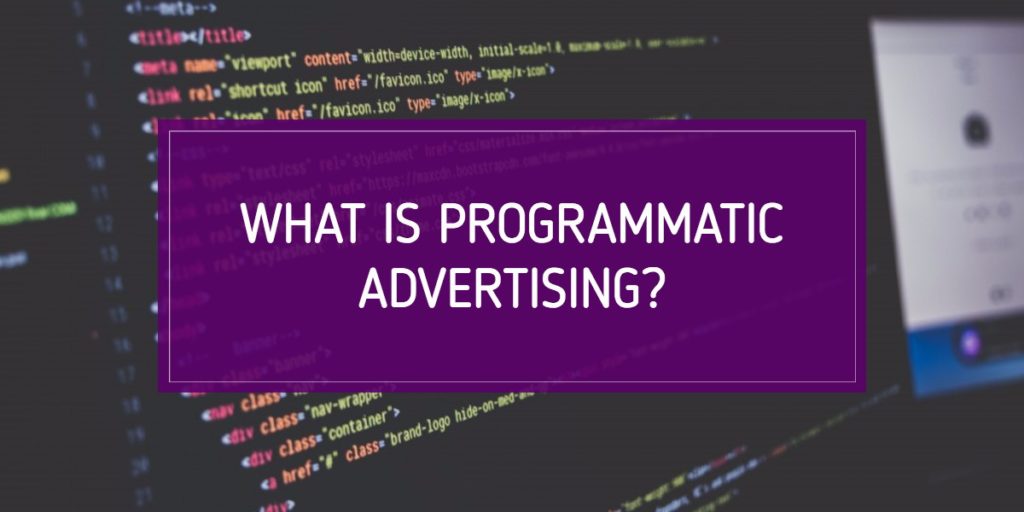A version of this post was originally published on my agency’s blog, Brandetize.

To understand what programmatic advertising is, we first need to understand how traditional online ad buying works.
To buy advertising space on a particular website, you must find a contact, reach out, ask for rates and sizes, negotiate, schedule dates, send over creative, pay a large upfront fee/budget for your campaigns, ensure it’s running, and get stats.
It’s a whole lot of back and forth, and a whole lot of time wasted.
In this form, you’re paying to reach a lot of people, but not always the right people.
Programmatic ad buying in it’s simplest form is automating this lengthy ad buying process.
Real-Time Bidding
One way to use programmatic advertising is real-time bidding (RTB). RTB means as a page loads, the information about that page and the user viewing it is sent to the ad exchange. The ad exchange is the platform that auctions off the ad space to the highest bidder. The winning ad is then shown when the page is finished loading. This entire process happens in milliseconds.
Programmatic Direct
Another way to use it is programmatic direct. This is the process of buying guaranteed ad space on specific sites without the use of an auction. In this case, ad space is priced at a flat cost per 1,000 impressions (CPM) rate per website or network. For example, it may be a $6 CPM to run ads on New York Times, and it may be $2.50 CPM to run on a network of food-related blogs.
This automatic process eliminates the need for salespeople, wasted time, and most importantly being locked into expensive contracts for display ads on certain sites that don’t work.
Self-Serve or Managed Platforms
Most programmatic vendors offer either a self-serve platform, a managed platform, or some combination of both.
When using a self-serve platform, you’re running the show. You set up the campaigns and targeting, decide which websites or networks the ads will appear on, and you must optimize the campaigns yourself. This requires more time, but you could pay a lower CPM if you know what you’re doing.
A managed platform will eat up a lot less of your time. Let the experts take the reigns to set up campaigns and optimize for you. All you have to do is provide them your desired parameters and any specific creative you want to use. Some vendors will include creative design as well. This saves a lot of time but will be more expensive as you have a team working for you. However, since they are the experts you should expect to see higher returns making the investment worth it.
Platform Features
Vendors differ in what their specific platform can do, but here are some of the features you can expect:
- Data, data and more data from 3rd party providers and 1st party tracking
- Easily scalable to other countries
- Cross-device targeting
- Hyperlocal targeting
- Dynamic CPMs (dCPMs) – bid amounts based on how qualified a prospect is
- Weather-based ads
- Showing ads in a sequential order to a user
- Ability to show ads above the fold only
- Protection against fraudulent clicks and sites
- Audience segments updated frequently to ensure clean data
- Heat maps to show user interaction with display ads
- Past location-based targeting
- Automatic optimization based on sites and times of day
- Display, video, and Facebook ads
- Dynamic retargeting
In my limited testing of programmatic advertising, my main takeaway was that it takes a large budget to be effective. We spent $5,000 over a 1 month period. Our cost per lead went from $60 at the beginning of the test to $10 per lead at the end. It was too expensive for us to continue, but the larger the budget you have, the better the campaign can optimize and find the right prospects to show your ads to.
Are you using programmatic or have you tested it in the past? Share your experience in the comments below.